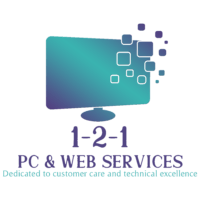Web Solutions
Dedicated to Customer Care
and Technical Excellence
Web Solutions
Dedicated to Customer Care
and Technical Excellence
PHP & Plugins
PHP code is what makes WordPress work. A WordPress website stores all its data in a MySQL database. This data includes everything from your blog name and blog post content, to your plugin settings and user profile information. PHP’s job is to get specific information from the database, and piece it together into an HTML web page. For more details on that process, you can see our guide on how WordPress works behind the scenes.
PHP files in WordPress do their work on your web hosting server. So, in simple terms, when someone goes to your website, WordPress accesses the PHP files to get your database information (like your blog post content) to show it to your visitor. That sounds simple enough. However, there’s a little problem. Web browsers don’t read PHP. They read HTML. HTML is a type of scripting language used to create website pages. We refer to HTML as a “client-side” scripting language.
Browsers like Chrome, Firefox, and others are called “clients.” Here, a “client-side” language simply means that web browsers do the work of turning HTML code into what you see on your browser window.
PHP and Plugins
PHP code is what makes WordPress work. A WordPress website stores all its data in a MySQL database. This data includes everything from your blog name and blog post content, to your plugin settings and user profile information. PHP’s job is to get specific information from the database, and piece it together into an HTML web page. For more details on that process, you can see our guide on how WordPress works behind the scenes.
PHP files in WordPress do their work on your web hosting server. So, in simple terms, when someone goes to your website, WordPress accesses the PHP files to get your database information (like your blog post content) to show it to your visitor. That sounds simple enough. However, there’s a little problem. Web browsers don’t read PHP. They read HTML. HTML is a type of scripting language used to create website pages. We refer to HTML as a “client-side” scripting language.
Browsers like Chrome, Firefox, and others are called “clients.” Here, a “client-side” language simply means that web browsers do the work of turning HTML code into what you see on your browser window.
Expert Web Development & Troubleshooting
With many years of experience in web development and back-end server work, I specialize in SQL development, PHP, ASP, and .NET. Whether you’re struggling with a complex database issue or need custom back-end functionality, I have the expertise to streamline your systems and improve performance.
But where I truly thrive is troubleshooting—especially when it comes to WordPress. If your site is slow, broken, or behaving unpredictably, I can diagnose the issue and get things running smoothly again.
So why waste time stressing over technical problems? Let me handle the complexities while you focus on what you do best. If your website, server, or domain is giving you headaches, reach out today—I’ll help you create reliable solutions that work for you and your customers. Let’s build something great together!
